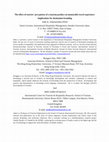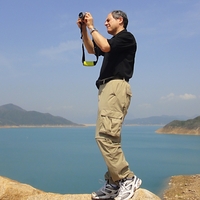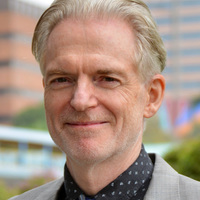Papers by Eddy Tukamushaba
Research in Hospitality Management, 2020
The purpose of this research was to establish the effect of employee behaviour on organisational ... more The purpose of this research was to establish the effect of employee behaviour on organisational competitiveness in the hospitality industry. A sample of 51 employees took part in the study. Results show that employee attitude and perceptions towards various aspects of hotel operation are key antecedents that shape employee behaviour. It was established that employee behaviour has a direct effect on organisational competitiveness. For future improvements, it is recommended that managers within the hospitality establishments make conscious efforts to involve employees in operational decision-making, communicate ideas in a way that is easy to understand, and lastly the salaries of employees should be adjusted periodically following key inflation factors such as the prices of essential commodities.

The purpose of this study was to analyse how tourists’ perceptions of a destination’s tourism pro... more The purpose of this study was to analyse how tourists’ perceptions of a destination’s tourism product influences memorable tourism experiences and how gender differences influence tourists’ perceptions of tourism product in Uganda. The 5 A’s of tourism product model was used as a basis for the questionnaire development. Explanatory research design using structural equation modeling technique within the framework of confirmatory factor analysis was adopted. A sample of 501 respondents consisting of tourists leaving Uganda through the Entebbe International Airport was used.
Results showed that both the measurement and structural models were fit to be used to explain the observed variance in memorable travel experience. Overall, tourists’ perceptions of tourism product (Attractions, Ancillary services, Amenities and Accommodation) had a positive influence on memorable travel experience. There was no significant observed difference between gender and perceptions of Uganda’s tourism product. However on average, females evaluated Uganda’s tourism product positively compared to their male counterparts.
It is recommended that destination management organisations should pay attention to infrastructure development. Notable of these is transport infrastructure which is central in linking potential and actual tourists to different tourism attractions in Uganda. Overall providing unique tourism product combination different from competitors is likely to enhance positive perceptions of Uganda’s tourism product which was found to have a positive influence memorable travel experience. Other implications for destination branding are discussed.
Http Dx Doi Org 10 1080 15313220 2012 729457, Nov 8, 2012
Encyclopedia of Tourism, 2014
Encyclopedia of Tourism, 2014

This paper develops a model that explains the relationship between tourism training and education... more This paper develops a model that explains the relationship between tourism training and education, community empowerment and participation in tourism planning and development in communities around protected areas in Uganda. Data was collected using a survey conducted in communities around Queen Elizabeth National Park in the western part of Uganda. The study focused of adult members in households following Uganda National Bureau of statistics guidelines of 2002 population census. A total of 310 questionnaires were distributed and 294 were utilized for data analysis. Qualitative data was also solicited through interviews with selected residents. Results indicate that tourism training and education together with community empowerment are strong predictors of community participation and involvement in tourism planning and development. Community empowerment was found to have a greater impact on the outcome variable.
Journal of Managerial Psychology, 2015
Academy of Management Proceedings, 2010
International Journal of Hospitality and Event Management, 2014
This paper presents the results of a study examining service quality assessment of selected secto... more This paper presents the results of a study examining service quality assessment of selected sectors of the Hong Kong tourism industry. The functioning of three related sectors of air, rail, and road transport, as well as tourism related government departments, is considered. Identification of the visitors and their perceptions of quality of service offered by these sectors are examined. In order to establish the importance of each of the service quality attributes in determining each sector's performance, importance-performance analysis was conducted on the airlines, public transport, and government agencies such as police, immigration, customs, and leisure and cultural services. The implications of the results obtained are discussed.

Globally rainforests are under threat on numerous fronts, including clearing for agriculture, har... more Globally rainforests are under threat on numerous fronts, including clearing for agriculture, harvesting for timber and urban expansion. Yet they have a crucial role in biodiversity conservation, climate change mitigation and providing other ecosystem services. Rainforests are also attractive tourist spaces and where they have been used as a tourism resource have generated significant income for local communities. However, not all use of rainforests as a tourism resource has been sustainable. This book argues that sustainability must be the foundation on which tourism use of this complex but ultimately fragile ecosystem must be built upon. It provides a multi-disciplinary perspective, incorporating rainforest science, management and tourism issues. The book is organized into four sections commencing with Rainforest Ecology and Management followed by People and Rainforests, Opportunities for Rainforest Tourism Development and finally Threats to Rainforests. Each major rainforest regi...
tThis paper provides an understanding of customers’ common expectations and other important facto... more tThis paper provides an understanding of customers’ common expectations and other important factorsthat enhance service experience during guest stay in the three selected four star rated hotels in Jammu,Chandigarh and Delhi, India. A structured questionnaire was used to collect data from hotel managers andindividual customers. Guest’s attitudes, their expected and unexpected feedback in addition to analyzingthe important information that helps in finding out particular areas critical to customer service qualityare explored. Overall the results indicate that expectations of the guests and actual experiences are atdisparity. Viable recommendations to the hotel owners in particular and the hospitality industry overallare made which are likely to improve customer’s memorable experience.

This paper develops a model that explains the relationship between tourism training and education... more This paper develops a model that explains the relationship between tourism training and education, community empowerment and participation in tourism planning and development in communities around protected areas in Uganda. Data was collected using a survey conducted in communities around Queen Elizabeth National Park in the western part of Uganda. The study focused of adult members in households following Uganda National Bureau of statistics guidelines of 2002 population census. A total of 310 questionnaires were distributed and 294 were utilized for data analysis. Qualitative data was also solicited through interviews with selected residents. Results indicate that tourism training and education together with community empowerment are strong predictors of community participation and involvement in tourism planning and development. Community empowerment was found to have a greater impact on the outcome variable.
Distance decay is a universal law that also applies to tourism. Both the volume declines and type... more Distance decay is a universal law that also applies to tourism. Both the volume declines and type of visitor changes as distance increases. Or so say the experts. Others suggest that destinations have unique appeal that can overcome some or all of the impacts of the decaying effect of distance. An examination of three markets from geographically distinct areas is carried out using Australia, Germany and United States of America. In addition, eight destinations of New Zealand, Netherland, South Africa, United Kingdom, Ireland, Finland, Canada-British Columbia and USA-California are analyzed using different visitor profiles (quantitative and qualitative) from each market that go to each of eight distinct destinations. A detailed comparison using the visitor profiles identified was carried out.
Journal of Teaching in Travel & Tourism, 2012

Journal of China Tourism Research, 2013
This paper aimed to identify the most influencing factors of Beijing's inbound tourism demand usi... more This paper aimed to identify the most influencing factors of Beijing's inbound tourism demand using the autoregressive distributed lag model (ADLM) and then generates forecasts of international tourist arrivals from the USA, the UK and Canada for the period of 2010Q3-2015Q4. The general-to-specific modeling approach was adopted to achieve final models while exponential smoothing method was used to produce forecasts for independent variables. Results show that factors such as 'word of mouth' effect, income level of the origin source markets, the costs of tourism in Beijing, and the cost of tourism in the competing destinations are crucial determinants of the tourism flows from three long-haul international markets. A group of error measures, such as, the mean absolute percentage error (MAPE), root mean square percentage error (RMSPE), mean absolute error (MAE), root mean square error (RMSE), and Theil's U statistic, were used to evaluate the forecasting accuracy. The results suggest that all three models had good forecasting abilities with the MAPEs ranging from 5.73% to 14.89%. Implications are discussed and recommendations as well as future research directions are provided.
Journal of Hospitality Marketing and Management (Accepted and forthcoming)
The term “theory” is used with diverse meanings, resulting in miscommunication and misunderstandi... more The term “theory” is used with diverse meanings, resulting in miscommunication and misunderstanding. This article examines how “theory”, as a word, is used in three leading journals in each of hospitality, tourism, and leisure studies fields over a 20-year period. Utilizing an iterative and comparative hierarchical coding, seven different forms of theory and trends in their usage by scholars over the 20 years are identified. Among the notable trends are: 1) A marked increase in the appearance of “theory” (as a word) and its variants over the years; 2) the virtual disappearance of natural science-type theory in the three fields; and 3) a dramatic rise in the use of “theory” as an analogy rather than as a substantive term. Implications and limitations of the study are also discussed.

This paper is aimed at exploring African children’s attitudinal reactions to
television advertise... more This paper is aimed at exploring African children’s attitudinal reactions to
television advertisements. A total of 65 children from four African countries –
Ghana, Nigeria, Kenya and Uganda – participated in 12 focus group discussions on the subject matter. Findings suggest that they like television advertising in relation to its entertainment features – especially when the messages feature children characters, cartoons, music, celebrities and humour – and those promoting foods. They also derive excitement from advertising messages that are presented in Pidgin language and/or humorously integrated with local languages.
However, they have an aversion to messages that terrify them and those they
consider boring. This paper supplements the existing literature on the attitudes of children to advertising, but from Africa as a different contextual platform. It also suggests directions for the effective use of marketing communications strategies in relation to television advertising for marketers and other bodies with special roles in communicating with children such as government agencies and NGOs.

This paper develops an integrated performance model that is aimed at improving service quality a... more This paper develops an integrated performance model that is aimed at improving service quality and providing accurate indicators that guide hotel managers in improving service priorities that promote customer satisfaction and eliminate resource wastage. The study was guided by three objectives of determining the level of importance of selected service quality attributes the level of satisfaction with selected service quality attributes and establishing the key service quality attributes that aid managers focus their improvement efforts.
Quantitative techniques were used based on a sample size of 238 respondents selected from 30 hotels labeled as Common wealth Heads Of Government Meeting hotels in 2007. The findings indicate that out of the 22 service quality items, 13 needed improvements. These were mainly to do with staff skills in handling customers’ requirements and the hotel owners’ inability to provide flexible services to customers which affected service quality. There is need for hotel owners to recruit personnel with skills in customer care in order to improve service quality.
KEY Words : Service quality; Customer satisfaction; Performance management; Performance model










Uploads
Papers by Eddy Tukamushaba
Results showed that both the measurement and structural models were fit to be used to explain the observed variance in memorable travel experience. Overall, tourists’ perceptions of tourism product (Attractions, Ancillary services, Amenities and Accommodation) had a positive influence on memorable travel experience. There was no significant observed difference between gender and perceptions of Uganda’s tourism product. However on average, females evaluated Uganda’s tourism product positively compared to their male counterparts.
It is recommended that destination management organisations should pay attention to infrastructure development. Notable of these is transport infrastructure which is central in linking potential and actual tourists to different tourism attractions in Uganda. Overall providing unique tourism product combination different from competitors is likely to enhance positive perceptions of Uganda’s tourism product which was found to have a positive influence memorable travel experience. Other implications for destination branding are discussed.
television advertisements. A total of 65 children from four African countries –
Ghana, Nigeria, Kenya and Uganda – participated in 12 focus group discussions on the subject matter. Findings suggest that they like television advertising in relation to its entertainment features – especially when the messages feature children characters, cartoons, music, celebrities and humour – and those promoting foods. They also derive excitement from advertising messages that are presented in Pidgin language and/or humorously integrated with local languages.
However, they have an aversion to messages that terrify them and those they
consider boring. This paper supplements the existing literature on the attitudes of children to advertising, but from Africa as a different contextual platform. It also suggests directions for the effective use of marketing communications strategies in relation to television advertising for marketers and other bodies with special roles in communicating with children such as government agencies and NGOs.
Quantitative techniques were used based on a sample size of 238 respondents selected from 30 hotels labeled as Common wealth Heads Of Government Meeting hotels in 2007. The findings indicate that out of the 22 service quality items, 13 needed improvements. These were mainly to do with staff skills in handling customers’ requirements and the hotel owners’ inability to provide flexible services to customers which affected service quality. There is need for hotel owners to recruit personnel with skills in customer care in order to improve service quality.
KEY Words : Service quality; Customer satisfaction; Performance management; Performance model
Results showed that both the measurement and structural models were fit to be used to explain the observed variance in memorable travel experience. Overall, tourists’ perceptions of tourism product (Attractions, Ancillary services, Amenities and Accommodation) had a positive influence on memorable travel experience. There was no significant observed difference between gender and perceptions of Uganda’s tourism product. However on average, females evaluated Uganda’s tourism product positively compared to their male counterparts.
It is recommended that destination management organisations should pay attention to infrastructure development. Notable of these is transport infrastructure which is central in linking potential and actual tourists to different tourism attractions in Uganda. Overall providing unique tourism product combination different from competitors is likely to enhance positive perceptions of Uganda’s tourism product which was found to have a positive influence memorable travel experience. Other implications for destination branding are discussed.
television advertisements. A total of 65 children from four African countries –
Ghana, Nigeria, Kenya and Uganda – participated in 12 focus group discussions on the subject matter. Findings suggest that they like television advertising in relation to its entertainment features – especially when the messages feature children characters, cartoons, music, celebrities and humour – and those promoting foods. They also derive excitement from advertising messages that are presented in Pidgin language and/or humorously integrated with local languages.
However, they have an aversion to messages that terrify them and those they
consider boring. This paper supplements the existing literature on the attitudes of children to advertising, but from Africa as a different contextual platform. It also suggests directions for the effective use of marketing communications strategies in relation to television advertising for marketers and other bodies with special roles in communicating with children such as government agencies and NGOs.
Quantitative techniques were used based on a sample size of 238 respondents selected from 30 hotels labeled as Common wealth Heads Of Government Meeting hotels in 2007. The findings indicate that out of the 22 service quality items, 13 needed improvements. These were mainly to do with staff skills in handling customers’ requirements and the hotel owners’ inability to provide flexible services to customers which affected service quality. There is need for hotel owners to recruit personnel with skills in customer care in order to improve service quality.
KEY Words : Service quality; Customer satisfaction; Performance management; Performance model